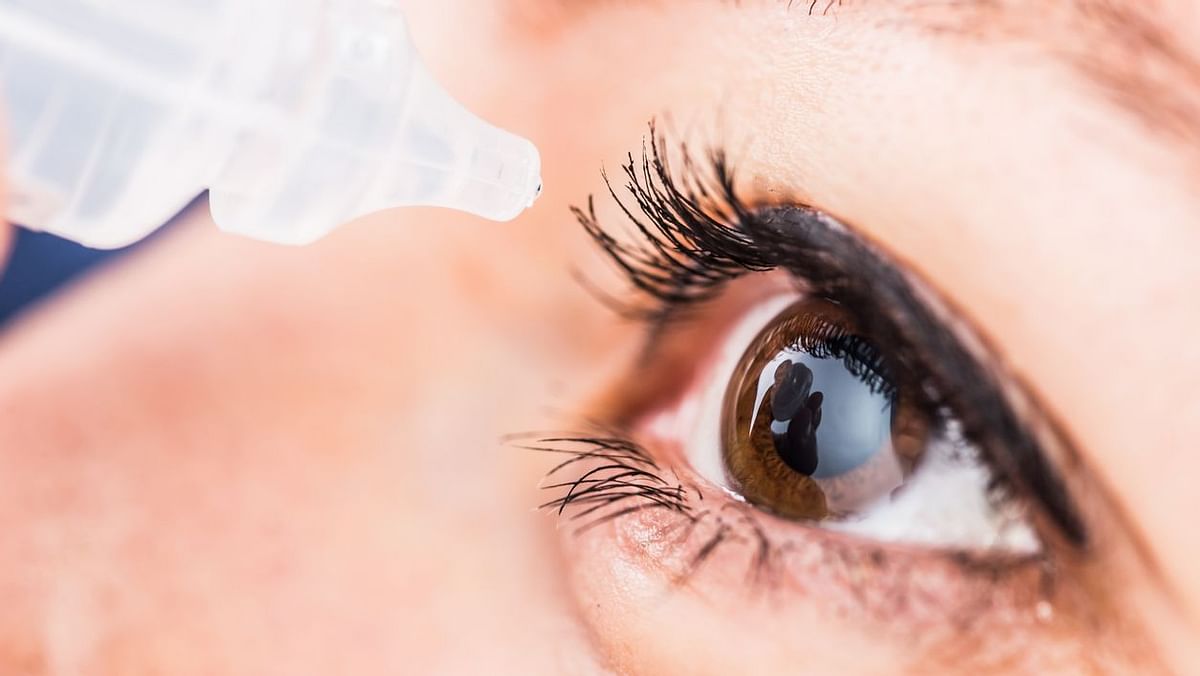Our eyesight is often something we take for granted until there’s something wrong with it.
Dry eyes, headaches and blurred vision are some of the symptoms of an eye problem, according to experts.
Here, Dr Jørn Slot Jørgensen of the Laser Eye Clinic, London, and Evelyn Mensah, a consultant ophthalmologist and eye surgeon at the Central Middlesex Hospital, share tips on ways you could be unwittingly putting yourself at risk.
People should undergo an eye test every two years or more often if their optometrist recommends it.
FG orders mandatory contributions for employees’ compensation by MDAs
SSANIP urges FG to address living wage, backs NLC strike
Dr Jørgensen said, “Failing to schedule regular eye tests can result in undiagnosed eye conditions.
“Conditions like glaucoma, diabetic retinopathy and macular degeneration often develop without noticeable symptoms in their early stages.
“Early detection through eye tests is crucial for effective treatment and vision preservation.”
Routine eye tests can also pick up early signs of underlying systemic health conditions such as diabetes, high cholesterol and high blood pressure.
Prolonged screen time
The widespread use of digital devices such as laptops, tablets and smartphones has led to extended periods of screen time for both work and leisure.
Dr Jørgensen said, “This can result in digital eye strain, characterised by symptoms like dry eyes, headaches and blurred vision.”
Ms Mensah recommends the 20-20-20 rule
She said, “This means every 20 minutes, looking at something 20ft away for 20 seconds. In addition, remember to blink when using a screen to prevent eyes from getting dry.”
Not wearing UV sunglasses
Failing to wear sunglasses with adequate UV protection can lead to harmful UV radiation exposure. This may contribute to conditions such as cataracts and age-related macular degeneration (AMD), Dr Jørgensen warned.
He said, “Protecting your eyes from UV rays, particularly in sunny conditions, is essential for preserving long-term eye health.”
Ms Mensah said UV exposure could also increase the development of growths on the surface of the eyes called pterygia.
She warned that, “Not all sunglasses filter UV light, so ensure they carry the CE, UV 400 or British Standard Mark. And never look directly at the sun because this can cause a solar burn in the macula that can result in permanent visual loss.”
Poor diet and lack of nutrients
Eating a healthy, balanced diet can help reduce your risk of sight-threatening eye disease such as AMD which impacts central vision.
Ms Mensah explained that the macula – part of the retina which processes what you see directly in front of you – contained natural pigments such as lutein and zeaxanthin that were found in dark-green, leafy vegetables such as spinach and kale.
“Vitamins A, C and E are also helpful, so eat at least five portions of fruit and vegetables a day, and if you have a family history of AMD, ask your GP about taking nutritional supplements,” she advised.
Dr Jørgensen added “A poor diet lacking essential nutrients like vitamins A, C, and E, as well as minerals like zinc, can harm eye health, as these nutrients are vital for vision and overall eye function.
“To maintain healthy eyes, it’s crucial to consume a balanced diet rich in leafy greens, colourful fruits and vegetables, and omega-3 sources.”
Smoking
If you’re a smoker, stopping is not only beneficial to your general health, but also for your eyes.
Ms Mensah said, “Smoking cessation is a modifiable factor that can reduce the risk of developing certain eye conditions such as AMD and cataracts.”
Not wearing prescribed glasses
There’s a widespread misconception that wearing prescribed glasses worsens your eyesight.
“This notion is inaccurate,” she stressed.
“The primary reason for wearing prescribed glasses is simply because you require them. If you neglect to wear them, you run the risk of experiencing headaches.”
Inadequate lighting
“Working or reading in areas with insufficient lighting can make your eyes work harder, leading to eye strain, discomfort and poorer vision,” said Dr Jørgensen.
He pointed out that good lighting, often called “task lighting”, was vital for creating comfortable conditions for reading and working.
Mail Online

 Join Daily Trust WhatsApp Community For Quick Access To News and Happenings Around You.
Join Daily Trust WhatsApp Community For Quick Access To News and Happenings Around You.


